Kimberly Flach is a good mother.
The kind of mother who decorates her dining room with a toy kitchen. The kind of mother who makes room for art projects and bug collections.
But even in the best of circumstances, things sometimes go wrong.
While expecting her second child, Kimberly caught cytomegalovirus, a common virus that mimics a cold or the flu.
CMV is usually harmless, but may cause birth defects if the virus is passed from mother to unborn child during pregnancy.
CMV prevention tips
The major cause of CMV infection is contact with saliva or urine of young children. This means that mothers, daycare workers, preschool teachers, therapists and nurses are most likely to be exposed to the virus.
Women who are pregnant, or planning to become pregnant, can reduce the risk of acquiring CMV infection by following the guidelines below. More detailed information is available from the National CMV Foundation.
1. Don’t share food, drinks or utensils. Instead of sharing your food, put your children’s food on a separate plate and feed them with your fork or spoon. Saliva can also be shared through drinking straws.
2. Never put a pacifier in your mouth. Because it’s quick and easy, it’s tempting to stick a pacifier in your mouth to clean it or hold it for a moment. Don’t do it. Saliva from the pacifier could transfer CMV to you and to your unborn infant.
3. Kiss children on the forehead, not the lips or cheeks. To avoid contact with saliva, try to avoid kissing anyone younger than age 6 on the face. Instead kiss them on the forehead or the top of the head.
4. Keep toothbrushes separate. Toddlers may want to brush your teeth with their toothbrush (or brush their own teeth with your toothbrush). Put your own toothbrush where your children cannot reach it and don’t play tooth-brushing games.
5. Wash your hands often using soap and water. If you’re around youngsters, you should wash your hands for 15-30 seconds every time you wipe a child’s nose or drool, change a diaper, feed a child or handle their toys.
That’s what happened to the Flachs. Their second daughter, Eloise, was born with congential CMV and will spend the rest of her life facing health challenges.
Now the Rockford, Michigan, mother, who is also a neonatal intensive care unit nurse, wonders what she could have done differently.
“The mom guilt is real,” she said.
Kimberly is determined to raise awareness of the contagious disease to help others have healthy babies.
“CMV is the most prominent environmental cause of birth defects, but it’s not talked about,” she said. “Everybody is afraid of talking about it because it’s so scary.”
‘My heart dropped’
At 20 weeks pregnant with Eloise, a routine ultrasound revealed the baby had a small head and possible bowel issues.
“My heart dropped,” Kimberly said. “This could possibly be the worst thing that could happen.”
A follow-up amniocentesis revealed CMV. That was when Kimberly realized the seriousness of the flu-like symptoms and rash she’d developed in February.
“It was lucky that we could prepare for it,” Kimberly said. She and her husband, Joel, had time to grieve, do research, and learn what to expect.
When little Eloise stopped thriving in the womb at about 34 weeks of gestation, doctors did a C-section. She arrived at just 3 pounds, 5 ounces.
“When she was born, she came out perfect,” Kimberly said. “But she was tiny, tiny, tiny.”
About one in 200 babies is born with congenital CMV. Many will be healthy. Of those, roughly one in five will be sick or experience long-term health problems.
Like Eloise.
Almost immediately doctors discovered a cyst in her abdomen, which perforated before surgery. The critically ill baby stayed hospitalized for weeks, with treatments including blood transfusions, incubation, an ostomy, physical therapy and more at Spectrum Health Helen DeVos Children’s Hospital.
“She had the best care,” Kimberly said.
Today one of her caregivers is physical therapist Elizabeth Kuzma, who has been working with Eloise for about nine months.
When Kuzma met Eloise, the little girl could crawl but she wasn’t able to stand. Now, the bright-eyed 2-year-old is exploring her world using a tiny purple walker for support, she sees the world through little pink glasses, and she’s learning to talk after receiving a cochlear implant for one ear and a hearing aid for the other.
Her vision and hearing issues have added to her challenges.
“I continually keep all of her sensory systems in mind when I set up therapy activities for her,” Kuzma said. “It often takes her extra time when she’s trying something new or moving over different surfaces.”
Eloise’s 4-year-old sister, Rosie, is often there to help.
“She loves to show Eloise how to do things, and Eloise loves to try to copy Rosie. It’s a good way to teach Eloise how to do new skills like step up and down benches or jump up and down on a mini trampoline,” Kuzma added.
Kimberly is also there for her every step of the way.
“On the scale of things we are lucky,” Kimberly said. “But she still has a lifetime of overcoming things.”
Raising awareness
Although you may not have heard of CMV, there’s a good chance you’ve had the virus.
According to the Centers for Disease Control and Prevention:
- More than half of adults have CMV by age 40, and nearly one in three children is infected by age 5.
- Most people with CMV show no signs or symptoms. Others may have a fever, sore throat, swollen glands and fatigue. Some, like Kimberly, develop a rash.
- Once CMV is in your body, it will stay there for life and can reactivate.
- CMV can cause serious health problems for unborn babies and for people with compromised immune systems.
Kimberly pointed out that most pregnant women know they should avoid a cat’s litter box so they don’t get toxoplasmosis, but awareness of CMV hasn’t reached the same level.
“It’s so preventable,” she said. “It should be something everybody knows about. If you don’t know about it, how will you protect yourself?”
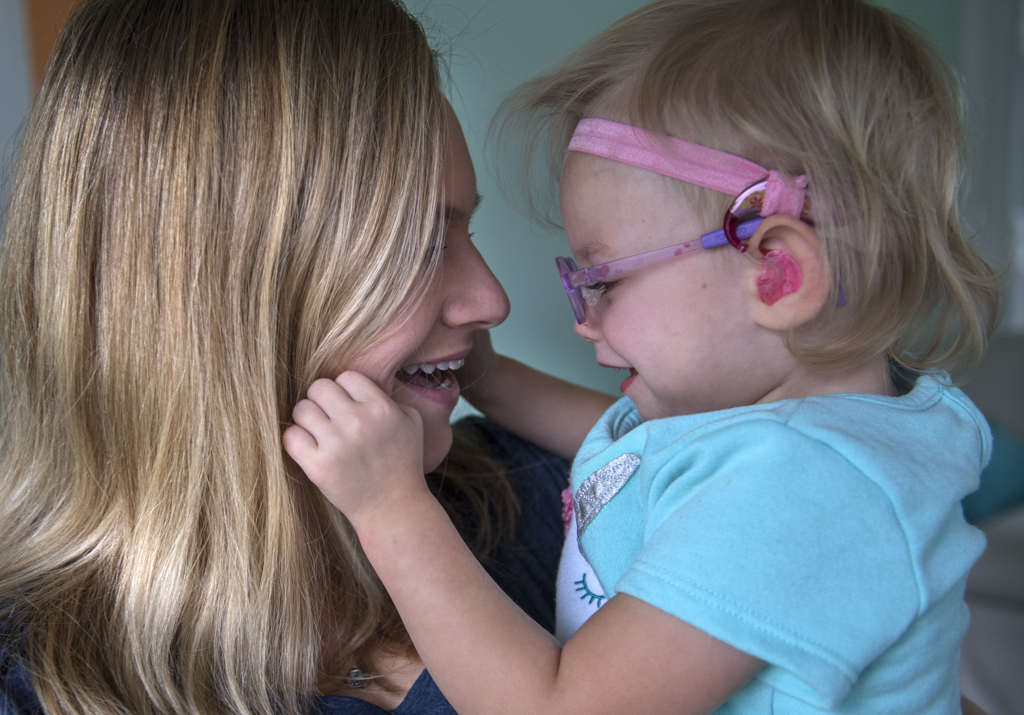
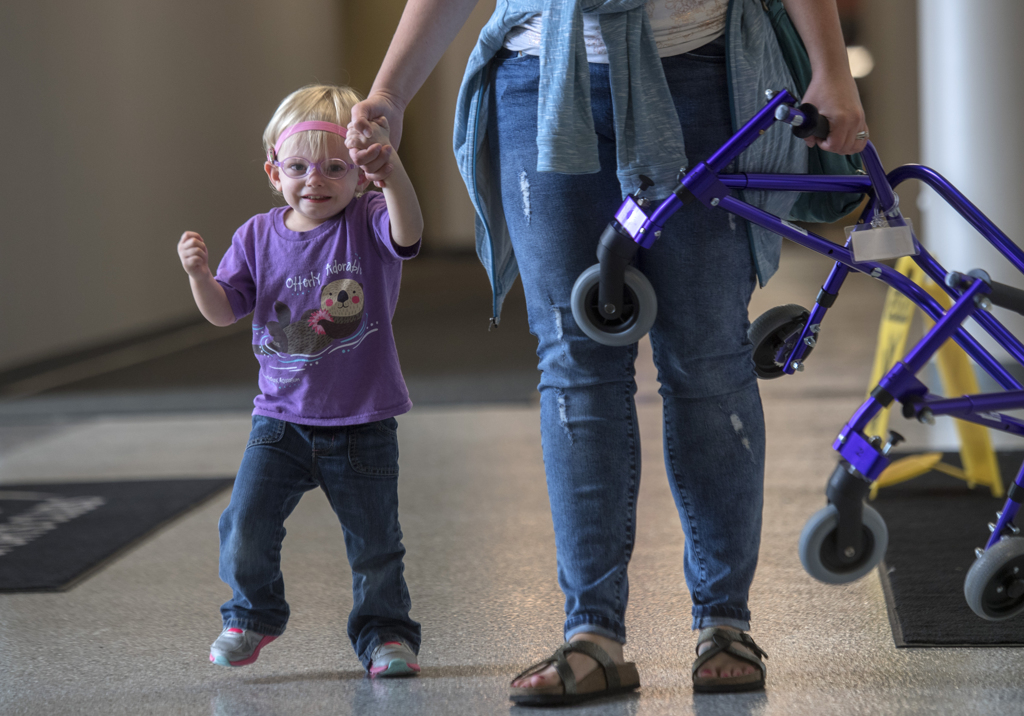
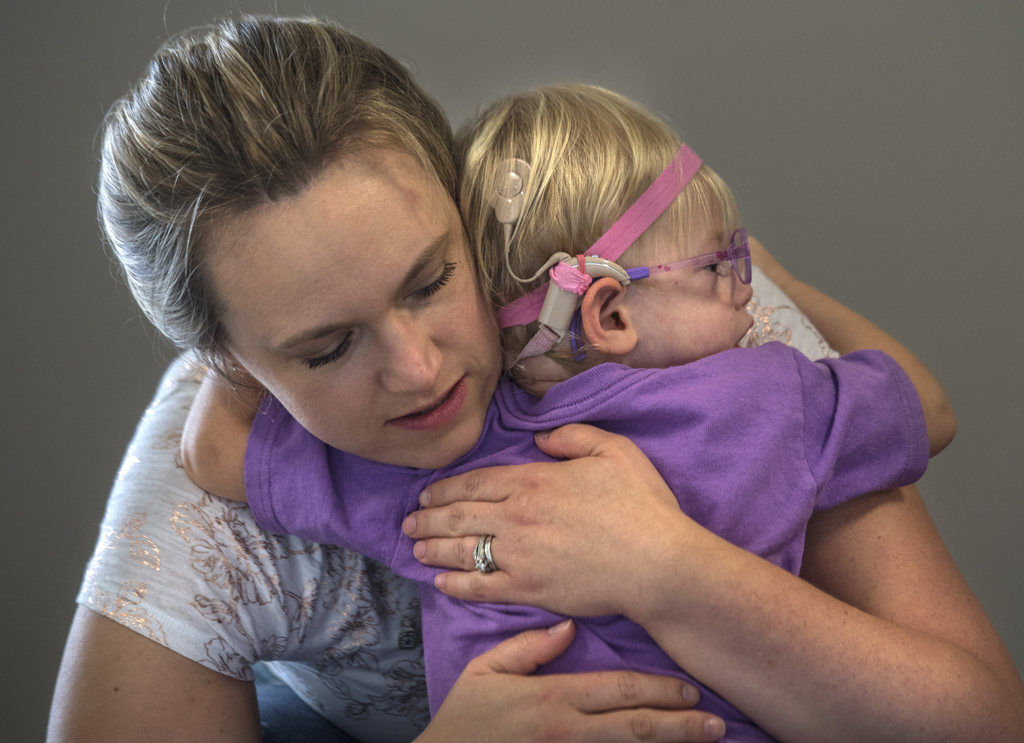
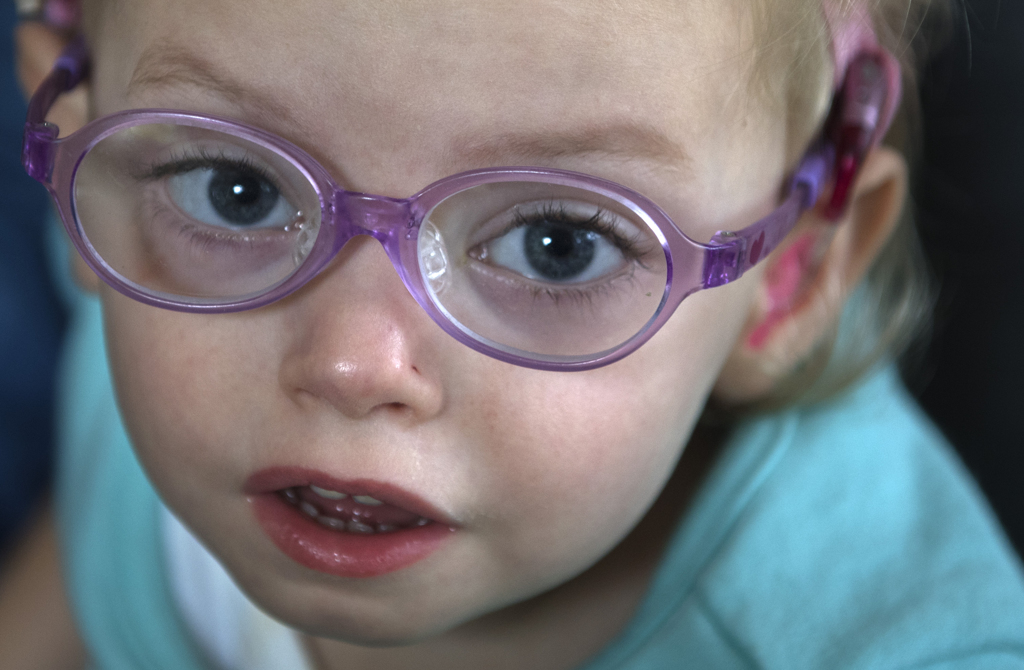


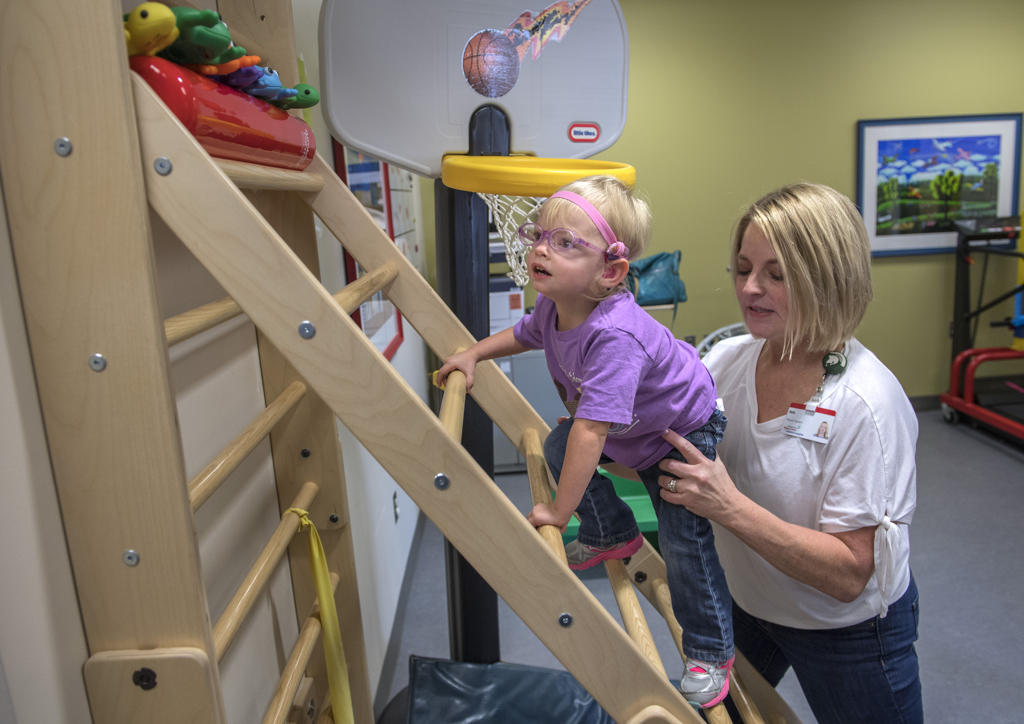

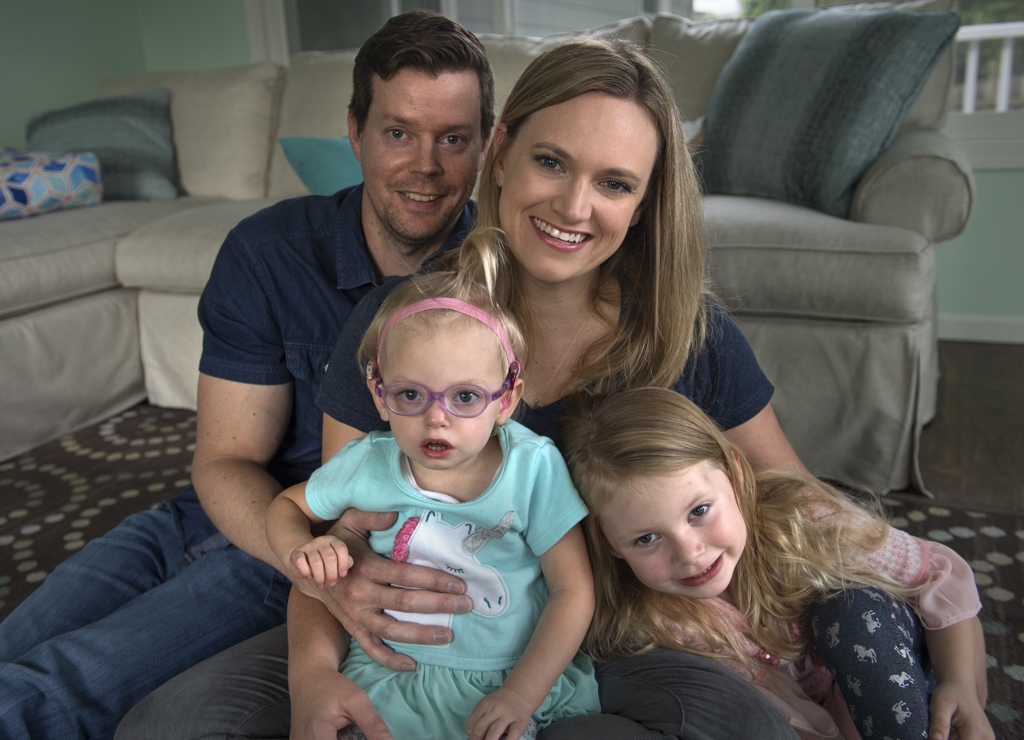







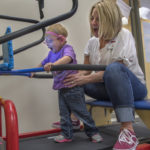
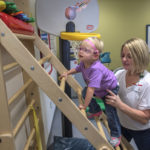




 /a>
/a>
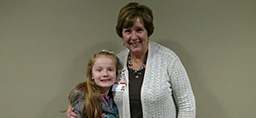 /a>
/a>
 /a>
/a>
Thank you for sharing your story! My son was also born with cCMV. He passed every test. By six months old he was profoundly deaf in both ears. He just turned 3 in September and we are making progress, but it’s not easy. We had never heard of it either and we didn’t find out until he was born at 34 weeks. Good luck on your journey! Our kiddos are amazing little warriors.
A month after my second child was born we learned she was totally deaf. After blood work was done to see why (because, of course, I must’ve done something wrong during my pregnancy 😒) it was discovered that I’d contracted CMV during my pregnancy. Besides the deafness, she also suffered from stiff muscles in her thighs that caused delays in reaching her milestones…couldn’t sit on her own until 11 months, crawled at 19 months, and took first steps at 22 months.
It’s been almost 17 years since my beautiful daughter came into my life and I still get treated as if I knowingly did something to cause her struggles…even from some doctors.
Thank you for bringing awareness to the fact that CMV is common and the parents of these children didn’t do something knowing that their babies might be affected.
Please share this medical information for all.
Thanks
Thank you for sharing your story. CMV is a very serious and scary “bug”. I’ve worked at the hospital through two of my pregnancies and I was always terrified of contracting it. There is very little awareness so again thank you for sharing! The listed CMV tips are excellent as well!
This makes me feel little less stress out about CMV, I am almost 23 weeks we found our little baby boy has CMV. It is still really scary and my boyfriend and I are trying to get a grip about what CMV is still but there is such little out there. And the doctors have even informed me about the out comes and how there is very little record and information about CMV.
Best wishes to you and your little one, Sarah. There are great resources available and I’m so glad you found hope in our story. If you haven’t yet, please do check into the National CMV Foundation – https://www.nationalcmv.org/